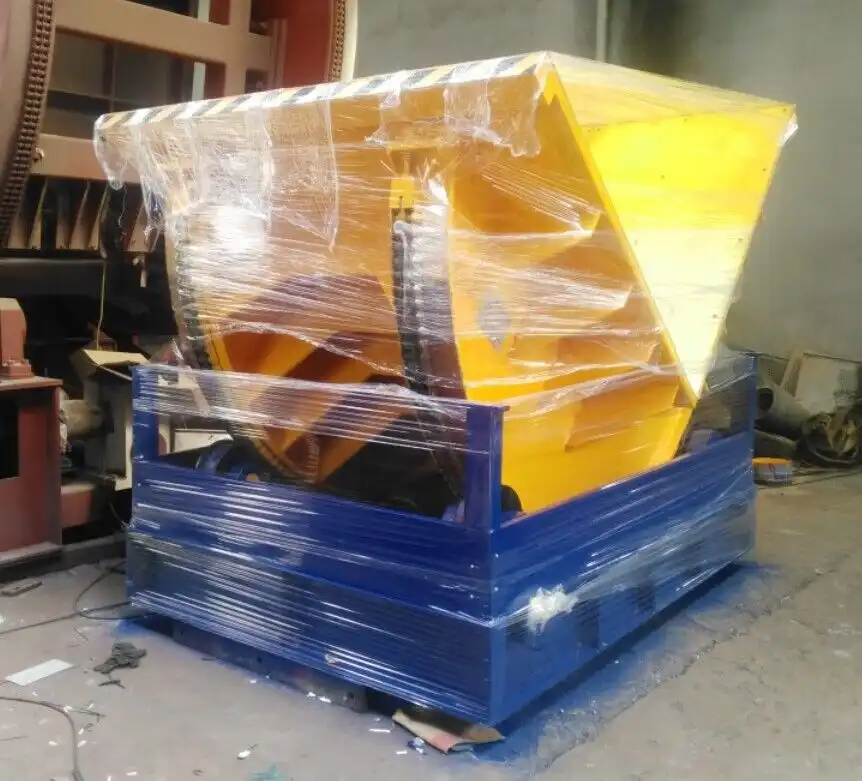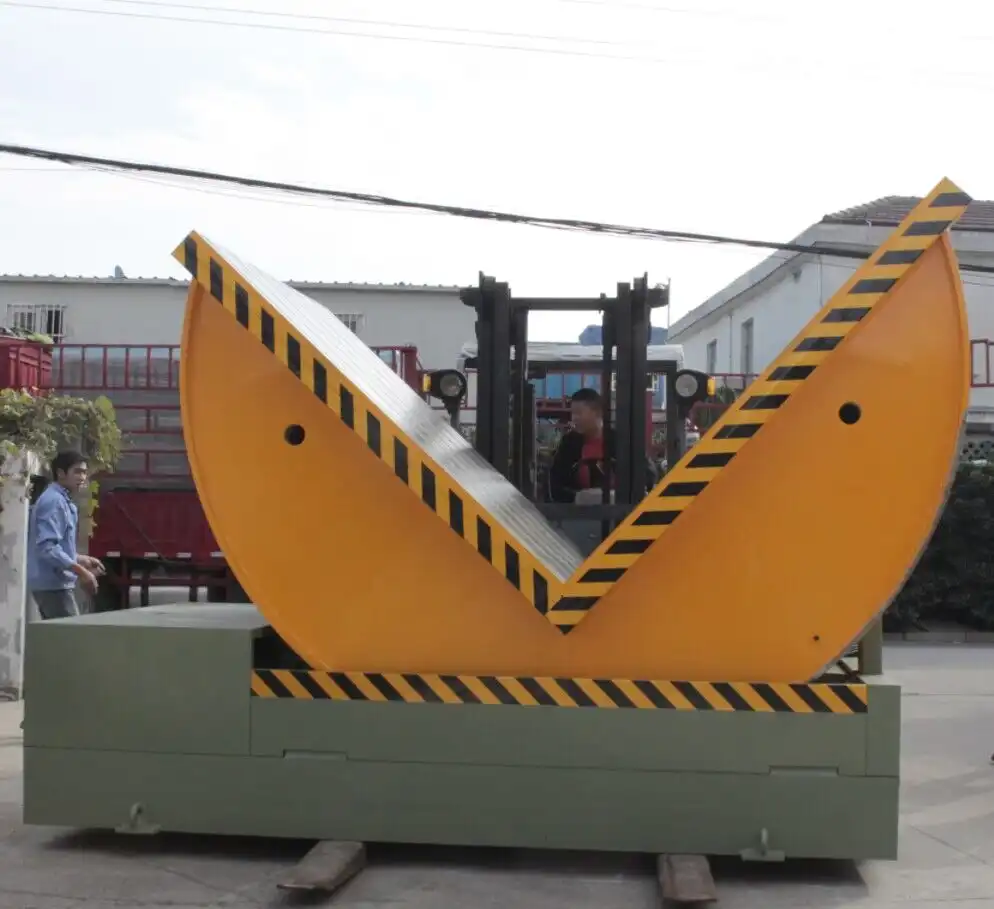Can AI-Powered Sensors Enhance Coil Upender Positioning Accuracy?
AI-powered sensors hold immense potential for revolutionizing coil upender operations. By integrating advanced machine learning algorithms, these sensors can provide real-time data analysis and predictive capabilities. This translates to enhanced positioning accuracy, reduced material damage, and improved overall efficiency.
%[AI-Powered Coil Upender]
Yes, AI-powered sensors can significantly enhance coil upender positioning accuracy. They achieve this by providing real-time feedback, predicting potential misalignments, and dynamically adjusting the upender's position. This results in minimized material handling damage, improved operational safety, and increased efficiency. Continuous monitoring and predictive analytics are the keys.
Curious how this innovative technology is being implemented in real-world applications? Read on to explore how AI-powered sensors are revolutionizing coil upender operations, enhancing precision, and streamlining processes across diverse industries.
Revolutionizing Coil Handling with AI-Driven Precision
AI integration is transforming coil handling, making it more precise and efficient. Coil upenders, crucial for safely rotating heavy coils, are now equipped with AI-powered sensors that can greatly improve their performance and reliability.
AI-driven precision in coil upenders translates to real-time monitoring and control, predicting misalignment, and mitigating the risk of material damage. AI algorithms process data from an array of sensors to dynamically adjust positioning, ensuring safe and accurate coil handling. The result is minimized downtime, enhanced operational safety, and improved overall productivity. AI-powered sensors are the key enablers for precise and reliable coil handling operations.
% [Precision coil handling]
The Technical Backbone: How AI and Sensors Work Together
This section delves into the technical aspects of how AI-powered sensors achieve unparalleled precision in coil upender operations. We will discuss the types of sensors used, the AI algorithms employed, and how they interact to deliver enhanced positioning accuracy and operational safety.
Sensor Technologies for Coil Upenders
Modern coil upenders are increasingly equipped with a suite of sophisticated sensors to monitor various operational parameters. These sensors capture real-time data essential for ensuring accurate and safe coil handling. Below are some of the key sensor technologies employed:
-
Position Sensors: High-resolution encoders and laser displacement sensors accurately measure the upender's angular position and movement.
-
Load Cells: Strain gauge-based load cells continuously monitor the weight and distribution of the coil, preventing overloads and ensuring balanced handling.
-
Vibration Sensors: Accelerometers and vibration sensors detect unusual vibrations that could indicate mechanical issues or imbalances, ensuring the stability and integrity of the upender.
-
Proximity Sensors: Infrared or ultrasonic sensors detect the presence and proximity of the coil, preventing collisions and ensuring safe loading and unloading.
-
Temperature Sensors: Thermocouples or resistance temperature detectors (RTDs) monitor motor and hydraulic system temperatures, helping to prevent overheating and potential failures.
AI Algorithms for Enhanced Precision
AI algorithms analyze the data collected from these sensors to optimize the upender's performance, predict potential issues, and improve overall operational efficiency. The following AI algorithms are commonly used in coil upender systems:
-
Machine Learning (ML): Supervised learning algorithms, such as support vector machines (SVMs) and decision trees, are trained on historical data to predict the optimal upender position and speed based on coil characteristics and operational conditions.
-
Deep Learning (DL): Convolutional Neural Networks (CNNs) and Recurrent Neural Networks (RNNs) are used to analyze sensor data and identify complex patterns that may indicate potential equipment malfunctions or safety risks.
-
Predictive Analytics: Time series analysis and regression models forecast future performance based on historical trends, enabling proactive maintenance and preventing unexpected downtime.
-
Fuzzy Logic: Fuzzy logic controllers manage uncertainty and variability in sensor data, allowing the upender to adapt to changing conditions and maintain precise control.
Data Integration and Decision Making
A crucial aspect of AI-powered coil upenders is the seamless integration of sensor data and AI algorithms. This process involves the following steps:
- Data Acquisition: Real-time data from various sensors are collected and pre-processed to remove noise and inconsistencies.
- Data Fusion: The pre-processed data are integrated to create a comprehensive view of the upender's operational status.
- AI Processing: The AI algorithms analyze the fused data to identify patterns, predict future performance, and optimize control parameters.
- Real-time Control: Based on the AI's analysis, the upender's control system dynamically adjusts the position, speed, and other parameters to ensure precise and safe coil handling.
To illustrate the effectiveness of AI integration, consider the following comparative analysis:
Feature Traditional Coil Upender AI-Powered Coil Upender Positioning Accuracy ± 5 mm ± 1 mm Downtime 10 hours per year 2 hours per year Material Damage Rate 3% 0.5% Maintenance Cost $5,000 per year $3,000 per year Operational Efficiency 85% 95% Safety Incidents 2 per year 0 per year This table highlights the significant improvements achieved by integrating AI into coil upender operations, demonstrating the technology's potential to enhance precision, reduce downtime, improve safety, and lower costs.
Improving Operational Safety with Real-Time Monitoring
Operational safety is paramount in material handling. AI-powered sensors play a crucial role in enhancing the safety of coil upender operations by providing real-time monitoring and predictive capabilities, mitigating risks, and ensuring regulatory compliance.
Real-time monitoring, enabled by AI-powered sensors, instantly alerts operators to any anomalies or unsafe conditions. Predictive analytics can forecast potential failures, allowing for preventive maintenance and reducing the risk of accidents. This proactive approach significantly improves operational safety and minimizes downtime, ensuring a secure working environment.
% [Coil safety]

Comprehensive Safety Mechanisms in AI-Enhanced Systems
AI-enhanced systems incorporate multiple safety mechanisms to ensure reliable and secure coil upender operations. Below are some of the key safety features:
Real-Time Anomaly Detection
AI algorithms continuously analyze sensor data to detect deviations from normal operating conditions. This includes monitoring:
-
Vibration Levels: Excessive vibrations can indicate mechanical issues or imbalances, prompting immediate inspection and maintenance.
-
Temperature Spikes: High temperatures in motors or hydraulic systems can signal overheating and potential failures, triggering automatic shutdowns.
-
Pressure Fluctuations: Unusual pressure changes in hydraulic systems can indicate leaks or blockages, alerting operators to potential hazards.
Predictive Failure Analysis
Predictive analytics uses historical data to forecast potential equipment failures. This allows maintenance teams to schedule repairs proactively, minimizing unexpected downtime and preventing accidents. Key analyses include:
-
Trend Analysis: Identifies patterns in sensor data that may indicate gradual degradation or wear.
-
Root Cause Analysis: Determines the underlying causes of recurring issues, enabling targeted maintenance strategies.
-
Remaining Useful Life (RUL) Prediction: Estimates how long a component will continue to function reliably, allowing for optimized maintenance planning.
Dynamic Load Management
AI algorithms optimize load distribution and prevent overloads by continuously monitoring weight and balance. Features include:
-
Weight Sensors: Real-time weight measurements ensure that the upender operates within its safe load capacity.
-
Balance Control: Automated adjustments maintain a balanced load, preventing tipping or instability during rotation.
-
Emergency Shutdown Systems: Immediate shutdown capabilities are triggered if weight limits are exceeded or instability is detected.
Enhanced Operator Assistance
AI-powered systems provide operators with real-time feedback and guidance to improve decision-making. This includes:
-
Automated Safety Checks: Pre-operation checks ensure all safety mechanisms are functioning correctly.
-
Visual Aids: Real-time displays provide operators with critical information, such as load distribution, stability indicators, and potential hazards.
-
Adaptive Control Systems: AI algorithms adjust the upender's operation based on real-time conditions, ensuring smooth and safe handling, even in dynamic environments.
Meeting Industry Standards
AI-enabled systems assist in ensuring adherence to industry regulations and standards, promoting consistency and safety across operations. This involves:
-
Compliance Monitoring: Automated checks ensure that the upender operates within specified safety parameters.
-
Data Logging: Comprehensive logging of operational data facilitates audits and compliance reporting.
-
Standardized Procedures: AI-driven systems enforce standardized operating procedures, reducing the risk of human error.
Conclusion
AI-powered sensors are transforming coil upender operations, offering enhanced positioning accuracy and robust safety mechanisms. While implementation challenges exist, including initial costs and complex data management, the long-term benefits of coil upender in improved efficiency, reduced downtime, and enhanced safety firmly establish them as essential for modern industries.


